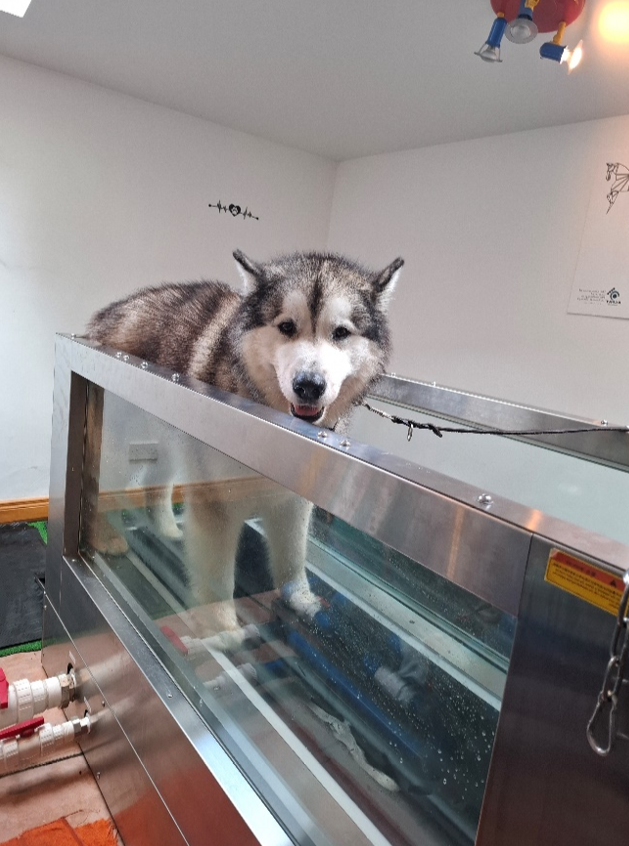Physiotherapy and Hydrotherapy management for Degenerative Myelopathy (DM)
- Vet
- Jun 6
- 2 min read
Degenerative Myelopathy is a progressive disease of the spinal cord. It affects older dogs, typically starting with hind limb weakness and progressing to paralysis, incontinence, and potential front limb involvement. While no cure exists, physiotherapy and hydrotherapy can help manage symptoms and support function aiming to keep the dog comfortable. Physiotherapy, and hydrotherapy can be involved at any stage to optimise quality of life but early intervention is key.
Aims of rehabilitation
The main aim of rehabilitation of degenerative myelopathy is to delay the progression of the condition and enhance quality of life.
Consideration needs to be paid to:
Maintenance of mobility and gait patterns
Prevention of any tightening of soft tissues such as tendons, muscles and ligaments
Maintenance of muscle mass
Enhancement of balance and coordination
Prevention of musculoskeletal disorders associated with the existing issues.
Physiotherapeutic treatment options
The list of treatment options available in the management of DM is extensive but can include the following:
Advice regarding exercise modification and avoidance of fatigue
Active and passive exercises
Strengthening of muscles using a combination of exercise, hydrotherapy and muscle stimulation
Hydrotherapy treatment options
Water-based exercise in the underwater treadmill is a crucial part of rehabilitation when a dog presents with DM. The buoyancy of the water provides support against gravity and allows more effective exercise of the weakened areas of the body. Depending on the severity of your dog’s clinical signs, the amount of support can be varied affecting how much effort will be needed to complete the exercises.
What can I do to help my dog at home?
A chartered physiotherapist will devise a home exercise plan for you to follow at home in-between outpatient and will also give advice regarding Activities of Daily Living (ADL), examples might be:
The use of suitable bedding to prevent pressure sores and to allow more stability during postural changes
Feeding positions to allow greater stability
Avoidance of slippery floors.
Should it be necessary, there are also many assistive devices available – these might include boots to prevent sores on the top of the paw as a result of scuffing, various harnesses and slings to provide mobility support and gym balls. Should it also be required then the physiotherapist can also advise you on the use of a canine mobility cart.
Regular re-evaluation and appropriate adjustments to the rehabilitation programme are vital in the management of DM.



Comments